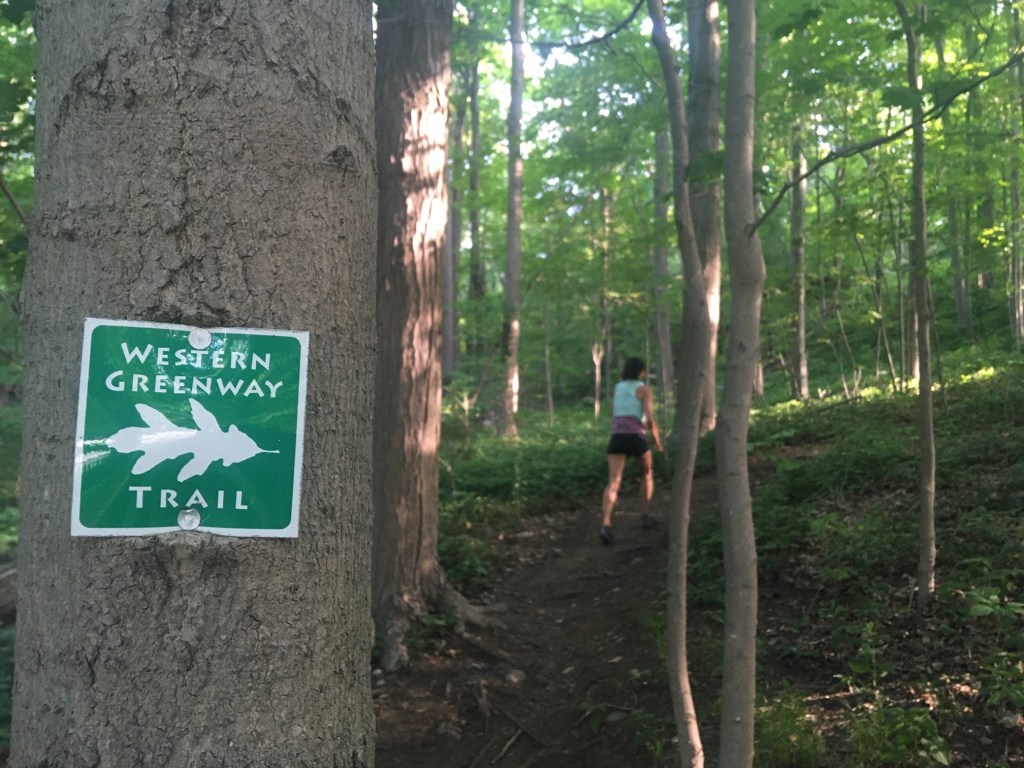Rock climbers have a term for the best, hardest climbs in their area. They call those climbs test pieces, an idea I like a lot as someone whose fitness rises and falls throughout the year. My sense of what I can and can’t do doesn’t usually bear that much relation to reality, so having local runs I can take on to assess myself is valuable.
Recently, my friends and I established a loop that leaves from our local water tower, leads into the woods, slithers onto some roads, through some parks, down some railroad tracks, and bends back home in a wide sweep using a narrow corridor of trail that, in spring, leaves you feeling like you’re deep in the woods, when you’re really not.

The distance is somewhere between 12 and 14 miles, which seems like a wide range, but is really just evidence of how inaccurate many GPS apps and devices can be. The specific distance isn’t that important, and here’s why. This route starts and leaves from a very specific location and follows a logical and well-known route (although the railroad track stretch is a new-ish addition that not everybody knows yet). So really, the distance is less relevant than the effort it takes to cover it, and as a secondary measure, the time it takes to cover is a brute force way of understanding where you really are in yourself.
Dataheads will be wondering what I’m talking about and why I haven’t (and won’t) track things like exact distance, pace, calories, etc. This is a good time to establish that I find data more hurtful than helpful in plotting my way forward in dirt-based adventures.

As someone who has been running and riding for 30+ years, I’ve seen all the ways you can measure your efforts. What I come back to each time I fall for the latest data collection trend, is that it distracts me from the feelings in my body and causes me to make poor decisions about what I’m doing. It cheapens my efforts, and as a shorthand for the quality of my experience, it is completely inadequate.
What I’m looking for is flow, that magical state of being in which running and riding feel easy, the dirt flows under your feet or your tires, and unwittingly, a smile creeps across your sweaty face. I’ve never looked down at a watch, seen that I had gained 1000 vertical feet and thought, “YES!!”

Some will say that you can do both, listen to your body and listen to the data, and that may be true. I’m just not one of those people. It’s not that I’m not interested in the information. It’s that I’m too interested in it, and then I’m off on some boondoggle that has nothing to do with flow, but everything to do with improving meaningless statistics.
I’m just coming back now from a broken collarbone, and (don’t tell my doctor, but) I started running last week, after 6 weeks off. So this morning’s misadventure on our local test piece was a combination walk/run effort. I find I really enjoy this approach, because it lets me feel in control the whole time. It’s akin to the way ultramarathoners cover distance, conserving their running legs for terrain where running can gain them real time, and then recovering again during, ideally, fast walking sections.
I knew it would be a good morning when I saw a fox pup rounding the corner as I left the house. The pre-dawn neighborhood was quiet and still, and my running partner met me on the way to the water tower.
We saw a deer on the path, and there was a cool breeze in the woods. It felt good to sweat and move, and I was back at the house before my kids had finished breakfast. 2 hours, 46 minutes, 18 seconds.
We can go faster, and we know it, and that leaves it out there as a project for later, right from the front door.
